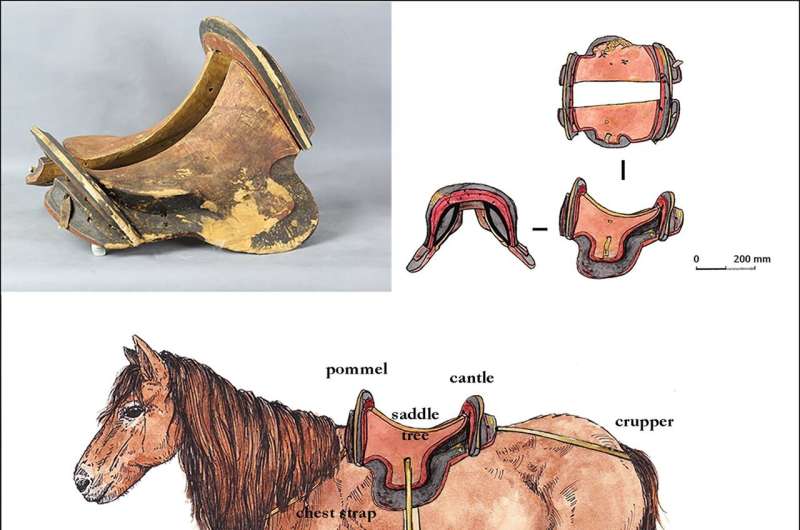New research suggests that advancements in equestrian technology played a crucial role in the rise of Mongolian steppe cultures. The discovery of the oldest true wooden frame saddle in East Asia, dated between 267 and 535 AD, sheds light on this pivotal era.
This sturdy saddle, equipped for stirrups, offered riders greater control and weight capacity, revolutionizing mounted warfare and contributing to significant social changes across Eurasia. Previously, little was known about the origins of this technology.
Unearthed from a human and horse burial in western Mongolia, the saddle offers concrete evidence of the early development of this technology. Moreover, its construction materials, sourced locally from domesticated horses and birch trees, suggest that these cultures actively participated in the development and manufacture of this transformative tool.
This discovery coincides with the rise of the powerful Rouran Khaganate, a Proto-Mongolic empire that conquered vast swathes of Inner Asia. The new saddle technology, facilitating superior mounted combat, likely played a key role in their success.
The researchers highlight the potential impact of this find: “These advancements in equestrian combat may have contributed to the formation of early steppe polities.” They further suggest that the Rouran’s rise might not have been possible without this technological edge.
This discovery promises to rewrite our understanding of East and Central Asian history. The early adoption of advanced saddles and stirrups could have significantly influenced the formation and power dynamics of early empires on the Eurasian steppe.
